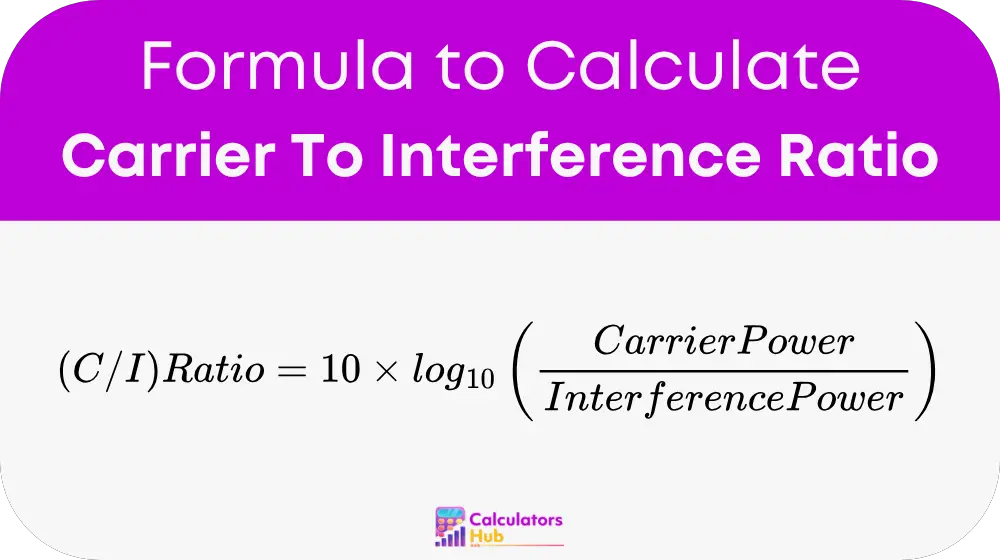The Carrier to Interference Ratio (C/I Ratio) Calculator is an essential tool used in telecommunications and signal processing to measure the quality of a communication signal. The C/I ratio quantifies how much stronger the carrier signal is compared to the interference signal. A high C/I ratio indicates a clearer, more reliable communication channel, while a low ratio can signify potential issues with signal quality, leading to reduced performance in data transmission.
In practical terms, this calculator is widely used by engineers, network designers, and technicians involved in wireless communication systems, satellite communications, and broadcasting. It helps assess the effectiveness of various technologies, such as cellular networks and Wi-Fi systems, in maintaining signal integrity against background noise and interference.
Formula of Carrier To Interference Ratio Calculator
The formula for calculating the Carrier to Interference Ratio is:

where:
- C/I Ratio = Carrier to Interference Ratio, expressed in decibels (dB)
- Carrier Power = Power of the carrier signal (in watts or milliwatts)
- Interference Power = Power of the interfering signal(s) (in watts or milliwatts)
General Terms Table
The following table includes commonly searched terms related to carrier to interference ratio, providing quick references to relevant terminology:
| Term | Definition |
|---|---|
| Carrier Signal | The main signal that carries information over a communication channel. |
| Interference Signal | Any unwanted signal that disrupts the carrier signal, affecting the quality of communication. |
| Signal-to-Noise Ratio (SNR) | A measure that compares the level of the desired signal to the level of background noise. |
| Decibel (dB) | A logarithmic unit used to measure the intensity of sound or power levels in electronics. |
| Communication Channel | The medium through which signals are transmitted from one point to another. |
| Wireless Communication | A method of transmitting information without physical connections, using radio waves. |
| Network Performance | A measure of the effectiveness and efficiency of a network in transmitting data. |
Example of Carrier To Interference Ratio Calculator
To illustrate how to use the Carrier to Interference Ratio Calculator, consider the following scenario:
- Carrier Power: 100 mW
- Interference Power: 10 mW
- First, convert the powers into a ratio:Carrier Power / Interference Power = 100 mW / 10 mW = 10
- Now, apply the formula:C/I Ratio (dB) = 10 × log₁₀(10)Since log₁₀(10) = 1, we have:C/I Ratio (dB) = 10 × 1 = 10 dB
Therefore, the Carrier to Interference Ratio in this example is 10 dB, indicating that the carrier signal is 10 times stronger than the interference signal. This suggests a reasonable level of signal quality for effective communication.
Most Common FAQs
The Carrier to Interference Ratio is crucial because it directly affects the quality and reliability of communication systems. A higher C/I ratio indicates that the carrier signal is less affected by interference, leading to clearer and more reliable transmissions. This is especially important in environments with high levels of background noise.
Generally, a C/I ratio above 20 dB is considered acceptable for most wireless communication applications. Ratios between 10 dB and 20 dB may still allow for usable connections, but users may experience degradation in quality. Ratios below 10 dB typically indicate poor signal quality and increased likelihood of dropped connections.
Improving the C/I ratio can be achieved through various methods, such as optimizing the placement of antennas, reducing interference from nearby devices, using high-gain antennas, or implementing better signal processing techniques. Additionally, upgrading to newer technologies or equipment may enhance signal clarity and reduce interference.